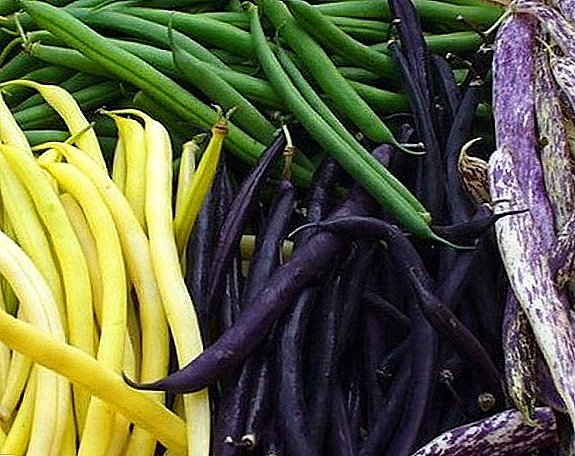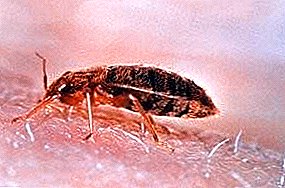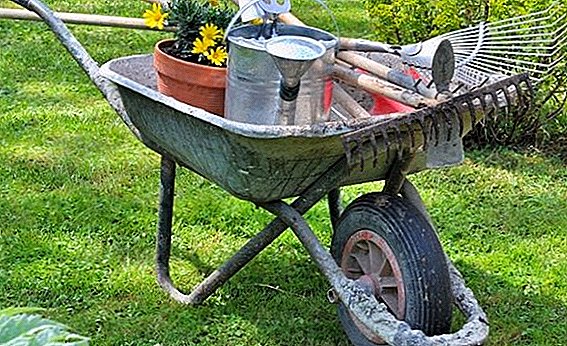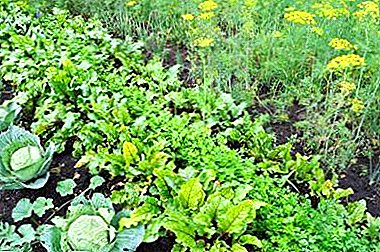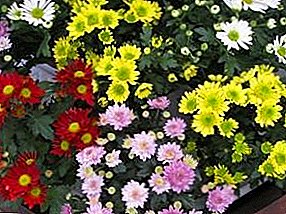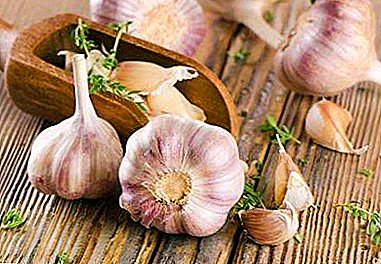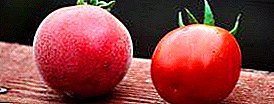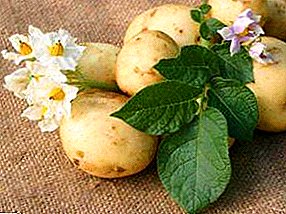
Despite the common features of table varieties of potatoes, each of them has its own characteristics.
Therefore, if the plant is cultivated in order to obtain a productive and tasty product, it is better to know in advance about all the characteristics of a particular variety.
In this article we will tell you about the characteristics of the variety and the main characteristics of the potato Santana. You will get acquainted with the features of his agricultural practices, learn about susceptibility to diseases and attacks of pests.
Potatoes "Santana": description of the variety
| Grade name | Santana |
| general characteristics | mid-season table variety of potatoes of Dutch selection, sensitive to lack of moisture |
| Gestation period | 80-95 days |
| Starch content | 13-17% |
| Mass of commercial tubers | 90-170 gr |
| The number of tubers in the bush | 6-11 |
| Yield | 164-384 (maximum - 419) c / ha |
| Consumer quality | great taste, suitable for salads, frying, cooking french fries and chips |
| Recumbency | 92% |
| Skin color | yellow |
| Pulp color | white |
| Preferred growing regions | Northwest, Central, Central Black Earth |
| Disease resistance | the variety is resistant to the golden pure-forming nematode, viruses and potato carcinoma |
| Features of growing | standard agricultural technology |
| Originator | company Handelmaatschappij Van Rijn BV (Holland) |
Potatoes "Santana" is considered mid-season variety. The period from the appearance of the first shoots to full maturity ranges from 80 to 95 days. Tubers are oval-shaped and have a smooth, yellow skin. The main feature of the appearance - numerous small "eyes" over the entire surface of the tuber.
The flesh of the potato is light yellow. The average weight of tubers is 90-120 g. But sometimes there are instances whose weight reaches 170 grams.
The variety is medium starch. As a rule, the content of starchy substances in the tuber does not exceed 13-17%. Due to this quality, heat treatment eliminates the possibility of cracking and digesting potatoes.
In the table below you can find the main characteristics of other varieties of potatoes:
| Grade name | Starch content | Recumbency |
| Santana | 13-17% | 92% |
| Milena | 11-14% | 95% |
| Elmundo | 12-14% | 97% |
| Cheri | 11-15% | 91% |
| Bryansk delicacy | 16-18% | 94% |
| Ariel | 13-16% | 94% |
| Borovichok | 13-17% | 94% |
| Tuscany | 12-14% | 93% |
Despite the average starch content, the taste of potatoes remains high.. "Santana" is considered to be the perfect variety for the preparation of chips and french fries. Tubers retain an appetizing appearance when frying, as well as in various types of salads. Use of a product for preparation of mashed potatoes is allowed.
A photo
You can get acquainted with the potato "Santana", according to the description of the variety, in the photo below:



Specifications
Potatoes "Santana" belongs to the group of varieties of Dutch-German selectionrepresented on the Russian market by KWS POTATO B.V. The root crop is recommended for cultivation in the Central, Northwest and Central Black Earth regions. More specifically, the potato variety "Santana" will be able to express themselves in such countries as: Russia, Moldova, Ukraine.
It is better to plant tubers in the beginning or in the middle of May. The ideal soil for “Santana” is considered to be the areas where perennial grasses, legumes and grain crops have already been sown. In general, the plant is not demanding on the type of soil, however, like most varieties, The best yield "Santana" shows on light, sandy lands. Usually, the average yield of a variety is 419 centners / ha.
You can compare the yield of Veneta and other varieties of potatoes using the table below:
| Grade name | Yield (kg / ha) | The number of tubers in the bush (pc) |
| Santana | 164-384 (maximum 419) | 6-11 |
| Labella | 180-350 | up to 14 |
| Melody | 180-640 | 7-11 |
| Margarita | 300-400 | 7-12 |
| Alladin | 450-500 | 8-12 |
| Courage | 160-430 | 6-9 |
| Sifra | 180-400 | 9-11 |
| The pot | 100-200 | 6-11 |
Care features
 Shrubs plants are low, semi-upright. The plant is dark green with fairly large leaves. A characteristic feature is a slight waviness of the sheet edge. In the period of flowering on the "Santana" appear small red-purple inflorescences. The variety does not require special care.. As a rule, all agricultural work associated with the cultivation of this species is reduced to weeding, as well as loosening the soil.
Shrubs plants are low, semi-upright. The plant is dark green with fairly large leaves. A characteristic feature is a slight waviness of the sheet edge. In the period of flowering on the "Santana" appear small red-purple inflorescences. The variety does not require special care.. As a rule, all agricultural work associated with the cultivation of this species is reduced to weeding, as well as loosening the soil.
The plant does not tolerate drought. During such periods, it may require abundant watering which must be combined with the introduction of nitrogen fertilizers.
Read more about how to feed potatoes, when and how to apply fertilizer, how to do it when planting.
For maximum results, during landing it is necessary to form a high furrow.
The requirement is due to shallow tuberization. In addition, potatoes of this variety do not tolerate mechanical damage, for example, during hilling. Mulching will help in weed control.
Subject to simple rules of care, sufficient fertilizing and soil moisture "Santana" is able to give quite high yields. And thanks to good keeping quality, potatoes no problem stored throughout the winter.
Read more about the timing and temperature of storage of potatoes, about possible problems. And also about the proper storage of root crops in the winter, in drawers and on the balcony, in the refrigerator and in peeled form.
Therefore, if the main purpose of cultivating a crop is food processing for industrial purposes (for example, semi-finished french fries), this variety should be taken into account.
 There are a considerable number of ways to grow potatoes.
There are a considerable number of ways to grow potatoes.Read in our materials all about modern Dutch technology, about the proper cultivation of early varieties, about how to get a good harvest without weeding and hilling and turn this process into a business.
And also about interesting methods of growing potatoes under straw, in boxes, in bags, in barrels, from seeds.
Diseases and pests
Plant is considered resistant to various kinds of viruses, pathogens of potato cancer, as well as cyst nematode. However, as experience shows, it is not able to resist late blight attacks.
Read more about the most common potato diseases: Alternaria, fusarium, verticillis, scab, and late blight.
As for insect pests, the biggest problems are usually delivered by the Colorado beetles and their larvae, the bears, the potato moth, the wireworm.
There are many ways to deal with them and you will find detailed information about them on our website:
- How to deal with the Colorado potato beetle with the help of folk methods and chemicals.
- How to get rid of the wireworm in the garden.
- What will help prevent the attack of Medvedka on potatoes: industrial means and folk.
- What to bring the potato moth: part 1 and part 2.
We also suggest you to get acquainted with other varieties that have a variety of ripening terms:
| Superstore | Early maturing | Medium early |
| Farmer | Bellarosa | Innovator |
| Minerva | Timo | Pretty boy |
| Kiranda | Spring | American |
| Karatop | Arosa | Crown |
| Juvel | Impala | Manifesto |
| Meteor | Zorachka | Elizabeth |
| Zhukovsky early | Colette | Vega | Riviera | Kamensky | Tiras |


